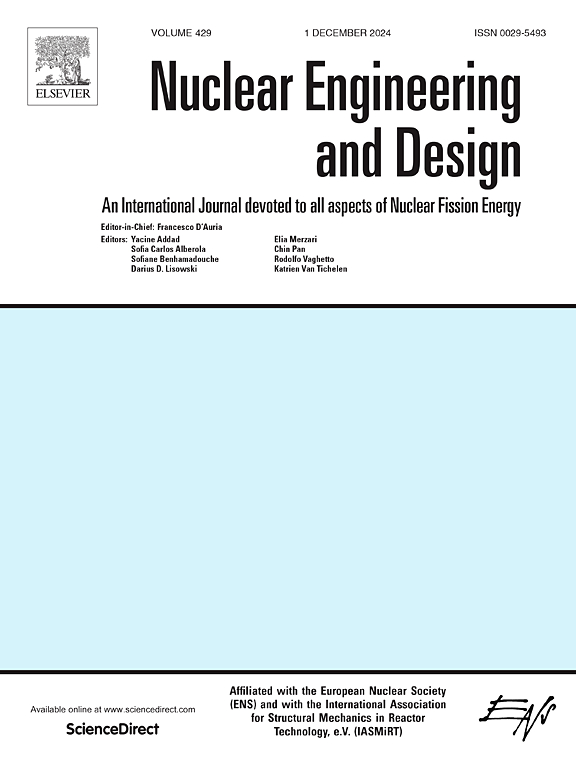Interaction characteristics of subcooled water jet with high-pressure upward into high-temperature oil in a confined space
IF 1.9
3区 工程技术
Q1 NUCLEAR SCIENCE & TECHNOLOGY
引用次数: 0
Abstract
During the Steam Generator Tube Rupture (SGTR) accident of Lead-cooled Fast Reactors (LFR), liquid metals come into direct contact with water, resulting in a multiphase flow phenomenon involving liquid metal, water and vapor. Studying the corresponding mechanisms of the interaction process between subcooled water jet and liquid metal is crucial with the pressure impact and temperature drastic changes during the phenomenon may damage the structural components of the reactors. The simulation experiments were conducted to investigate the interaction characteristics of subcooled water jet with high-pressure upward into high-temperature thermal oil in a confined space, studying the effect of experimental parameters (such as injection time and pressure, oil and water temperature, nozzle shape and diameter) on the oil temperature drop and pressure variation. Three pressurization modes were distinguished, including two overall vapor productions and one local vapor production. The evolution path of water/vapor in oil was inferred based on transient temperature changes. Finally, the oil temperature drop model was established by four dimensionless thermophysical parameters, and the model was validated with experimental values at an average error of 12.05%.
求助全文
约1分钟内获得全文
求助全文
来源期刊

Nuclear Engineering and Design
工程技术-核科学技术
CiteScore
3.40
自引率
11.80%
发文量
377
审稿时长
5 months
期刊介绍:
Nuclear Engineering and Design covers the wide range of disciplines involved in the engineering, design, safety and construction of nuclear fission reactors. The Editors welcome papers both on applied and innovative aspects and developments in nuclear science and technology.
Fundamentals of Reactor Design include:
• Thermal-Hydraulics and Core Physics
• Safety Analysis, Risk Assessment (PSA)
• Structural and Mechanical Engineering
• Materials Science
• Fuel Behavior and Design
• Structural Plant Design
• Engineering of Reactor Components
• Experiments
Aspects beyond fundamentals of Reactor Design covered:
• Accident Mitigation Measures
• Reactor Control Systems
• Licensing Issues
• Safeguard Engineering
• Economy of Plants
• Reprocessing / Waste Disposal
• Applications of Nuclear Energy
• Maintenance
• Decommissioning
Papers on new reactor ideas and developments (Generation IV reactors) such as inherently safe modular HTRs, High Performance LWRs/HWRs and LMFBs/GFR will be considered; Actinide Burners, Accelerator Driven Systems, Energy Amplifiers and other special designs of power and research reactors and their applications are also encouraged.
 求助内容:
求助内容: 应助结果提醒方式:
应助结果提醒方式:


